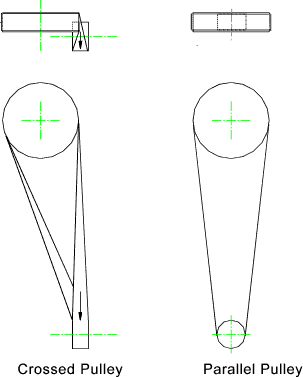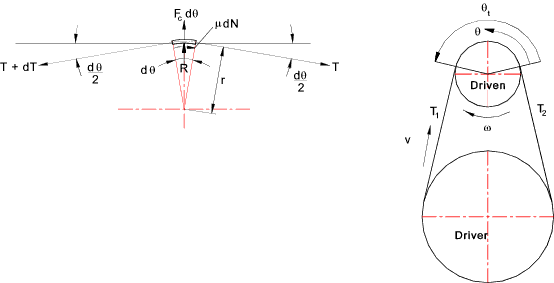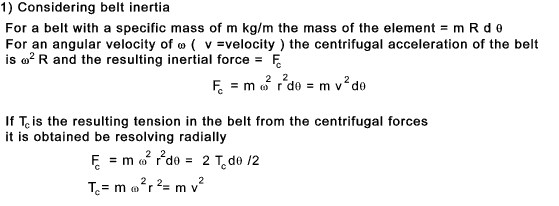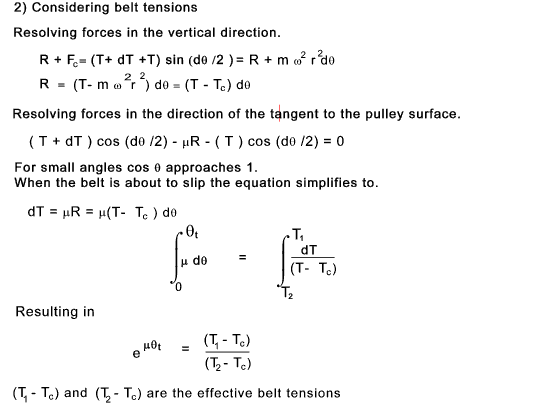Drive Belts
Flat Belt Drives
|
Introduction In many factories in the past flat belts have been widely used to drive the machines
in the factories. They are convenient to install and operate and are reliable. In modern times
machines are driven individually generally using electric or hydraulic drives...
In the past belts were generally made from leather. Now belts are also manufactured
from a wide range of elastomer including urethane, neoprene,
hypalon, EPDM, and silicone. Stretch, semi-stretch, and no-stretch belts
are available. Belts are often reinforced with textiles and fibres and
and metal reinforced belts are available. Belts can be provided with durable
surface coatings and coatings providing anti-static properties When designing belt drives it is normal to apply a service factor to the drive operating
load to compensate for allow for different driver type, driven load types and operating
periods. Typical ervice factor values are included on the linked page Service Factors
Note: If two pulleys of different diameters are used then in driving to the limit
the belt will slip on the smaller pulley first The power transferred = P = (T1 - T2 ).v / 1000 Belt Friction Factors
|
Links to Belt Design
|
|
Drive Belts



